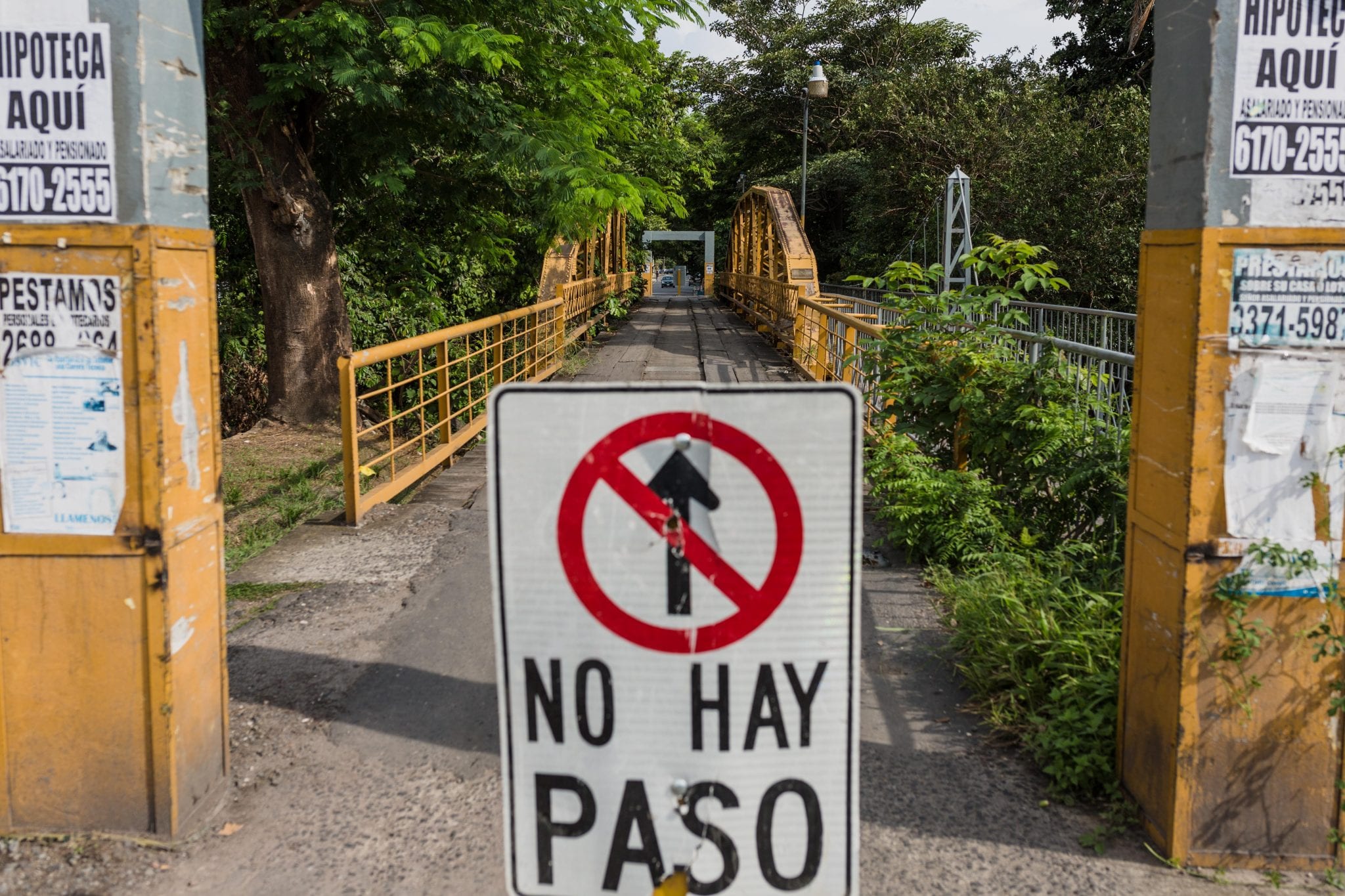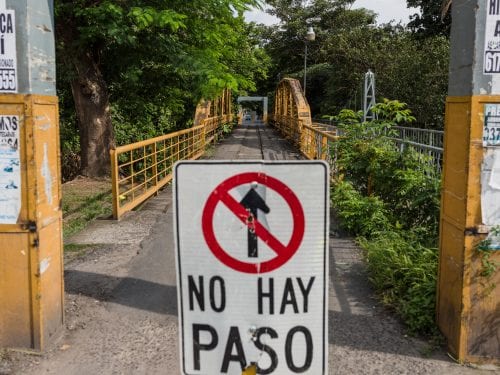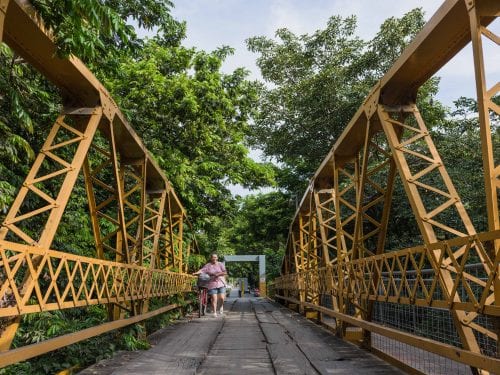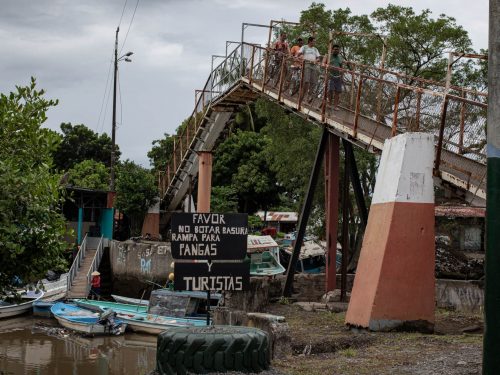
When I was a boy, the name given to the Puente Real bridge in Liberia always intrigued me. I wondered if, perhaps, members of the royal family had crossed it. If not, then why call it “Real” (royal)?
I asked the same question when I started this article. The response I got from sources is that the bridge was originally called Paso Real, which was the bridge that connected the Camino Real road with the Calle Real street during the years of Spanish colonization. Residents of the colony weren’t very creative when it came to naming their main streets.
While a king never crossed it on the way to the city, the horses and vehicles of all Costa Rica’s ex-presidents used the structure from 1907 when they built it to until 1955, when the new bridge over the Liberia River was installed, stealing Puente Real bridge’s glory, but not its significance.
It’s construction transformed the city of Liberia,” says historian national heritage Carlos Manuel Zamora. “It’s the most valuable bridge in Liberia because of its economic, cultural and political significance.”
These were precisely the reasons that the bridge was declared a national historical landmark in Costa Rica in 2011.
But, like most things related to the crown, the bridge is riddled with conflict and controversy. These days are no exception.
A Key Bridge
The bridge improved Liberia’s economy. All the goods and people going to and from San Jose were able to travel with greater ease and in larger quantities thanks to the bridge, according to attorney and Guanacaste historian Ronny Pizarro Méndez.
Former president Ascensión Esquivel Ibarra knew how important it was to build a structure with the purpose of making it easier for people and products to enter Liberia. It was even more important during rainy season months when rivers rose. Finally, in 1907 he awarded construction of the bridge to the American Bridge Company from New York.
The design created by the North American company was rather peculiar. It’s a bridge with train tracks that was never used for the train despite the fact that it only has one lane. Costa Rica’s national heritage center emphasizes this point.
Liberian teacher Miguel Fajardo says that the new infrastructure allowed people to reach Barrio Condega, one of the wealthiest neighborhoods of the city where owners of large estates used to live at the time.
It also played a politically strategic role in Liberia and Guanacaste because it led straight to the governor’s mansion (which, today, is located next to the church). Until 1990, that was where the provincial governor lived, which, at the time, was a member of the executive branch and named by the president.
The bull parade has also been key to the relationship between Liberians and the bridge. The tradition of walking bulls along the main streets of Liberia during the holidays continues today.
The Route of Discord
With all its historical baggage, the bridge is a celebrity among citizens, one that is shrouded in controversy. Some Liberia residents think that it must be preserved while others say it needs to be swapped out for a modern bridge with two lanes.
Liberia’s mayor Julio Viales thinks the bridge represents a risk for those who cross it because some of the boards are loose.
I think the ideal thing to do would be remove the bridge from that spot, put it somewhere else like a tourist attraction and build a new bridge,” Viales said, adding that the city doesn’t have the money or materials necessary to restore the structure.
That’s why the Municipality of Liberia decided to partially close it in August to vehicles. No four-wheeled vehicle can cross it.
The Culture Ministry restored the bridge in 2013 at a cost of ¢90 million, but the repairs have run their course.
Nuria Cuadra, member of the Liberia Cultural Association, doesn’t agree with the mayor’s position because the bridge is a national landmark and should therefore not be moved from where it sits.
These concerns reached Libera representatives, who will meet this month with officials from the national heritage center in order to come up with a budget to improve the current structure. Royalty still stands, for now.







Comments